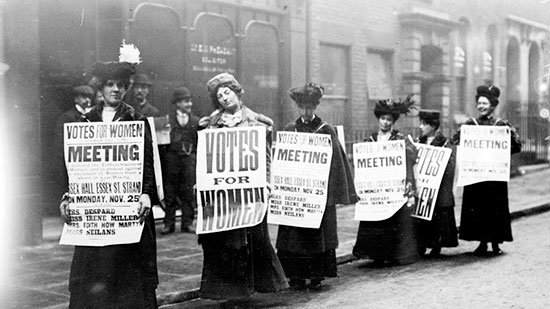Suffragette movement
Place and date:
In Mexico the vote for women occurred in 1955, after a huge struggle.
Context
On April 6,
1952, more than 20,000 women gathered in the "March 18" Park in
Mexico City to demand what the then candidate for the presidency, Adolfo Ruiz
Cortines, had promised them.
The women wanted to
see embodied in the Constitution the right to vote and be elected.
Women
began to demand more autonomy, thanks to the ideas of the Reformation and the
women's publications of the time.
In the first
women's magazine "Las Violetas del Anáhuac" an article was published
claiming this right, and from there, little by little, the idea of female
suffrage spread, and groups began to form in favor of this right, such as
"The daughters of Cuauhtémoc".
Historical data
In 1916 the first Feminist Congress was held, promoted by the Governor of Yucatan and several women opinion leaders.
In May 1923 the Mexican Section of the Pan American Women's League convened the First National Feminist Congress.
Main demands that came out of that congress:
- Civil equality so that women could be a candidate for administrative positions as well as cast suffrage.
In 1937 Lázaro Cárdenas sent an initiative to the Chamber of Senators so that women could obtain citizenship, and thus the vote.
In 1946, President Miguel Alemán approved an initiative for constitutional article 115 to indicate the participation of women in municipal elections.
Finally, on July 3, 1955, the women went to the polls for the first time to elect federal deputies.
Process of deindividualization:
The women started to unite and to protest demonstrations.
Freeing yourself from fear, because in those years, women considered the property of man.
For a century, the suffrage movement organized and expanded throughout the world, getting different countries to approve by law the right of women to vote.

Suffragettes opted for legal methods, talks and conferences to convince the population, while sufragettes preferred to use more radical actions such as demonstrations, protests and even hunger strikes.
These groups began to emerge in Anglo-Saxon countries, where the Industrial Revolution grew stronger and factories began to hire women to maintain production.
Progress or results from the movement.
- The power to vote
- The improvement of education
- Professional training and the opening of new jobs
- The equalization of sexes in the family as a means of avoiding the subordination of women and double sexual morality.




